The Plough, also known as the Big Dipper might just be the most famous pattern of stars in the sky.
Perhaps other than Orion, the hunter, it's the star pattern that most of us first learn to recognise.
It's known as the Plough in the UK and Ireland, and commonly referred to as the Big Dipper in North America.
Unlike Orion, however, the Plough isn't actually a constellation in itself.
It's an asterism, which is informal pattern of stars not recognised as among the 88 official constellations.
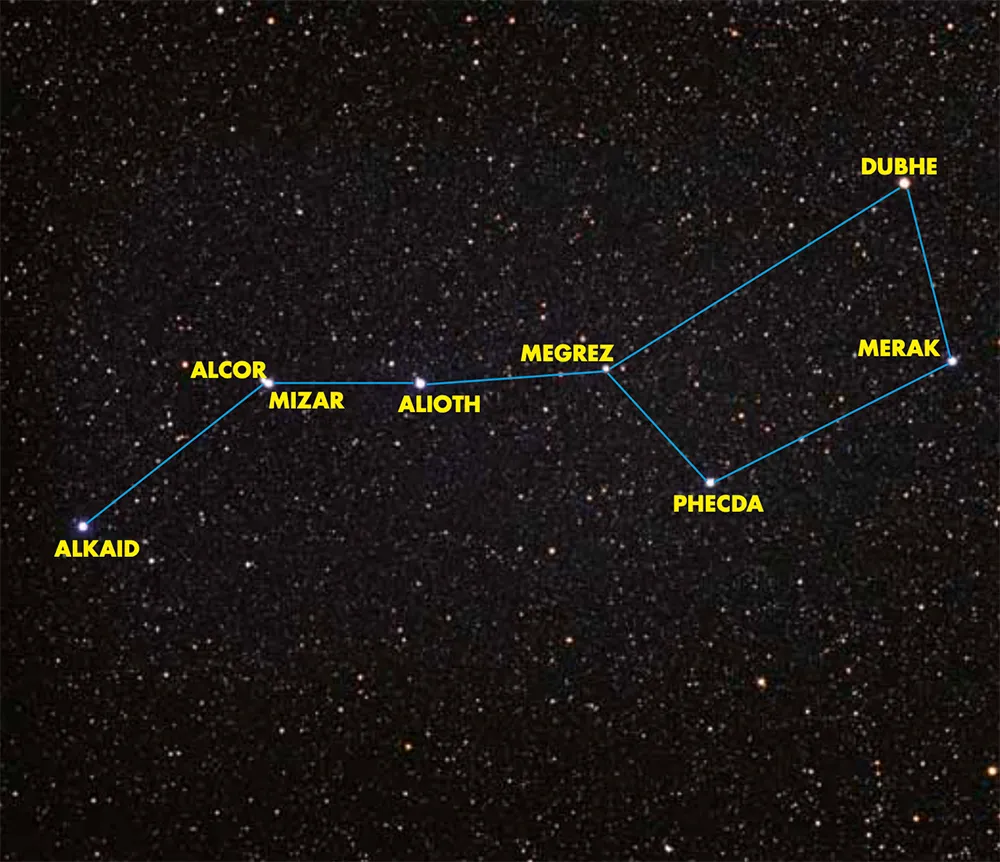
The Plough is a group of seven stars that form the body and tail of the mighty constellation Ursa Major, the Great Bear.
You can easily spot the Plough because it has the shape of a saucepan, where four stars form the 'pan' and the other three stars form the 'handle'.
If you've got a telescope, it's a great way to explore the asterism. You can reveal the double nature of Mizar and Alcor, for example.
But you can also explore some deep-sky objects within the surrounding region of the sky.
Here are 12 objects worth seeking out in the Plough / Big Dipper with your telescope tonight.
M101
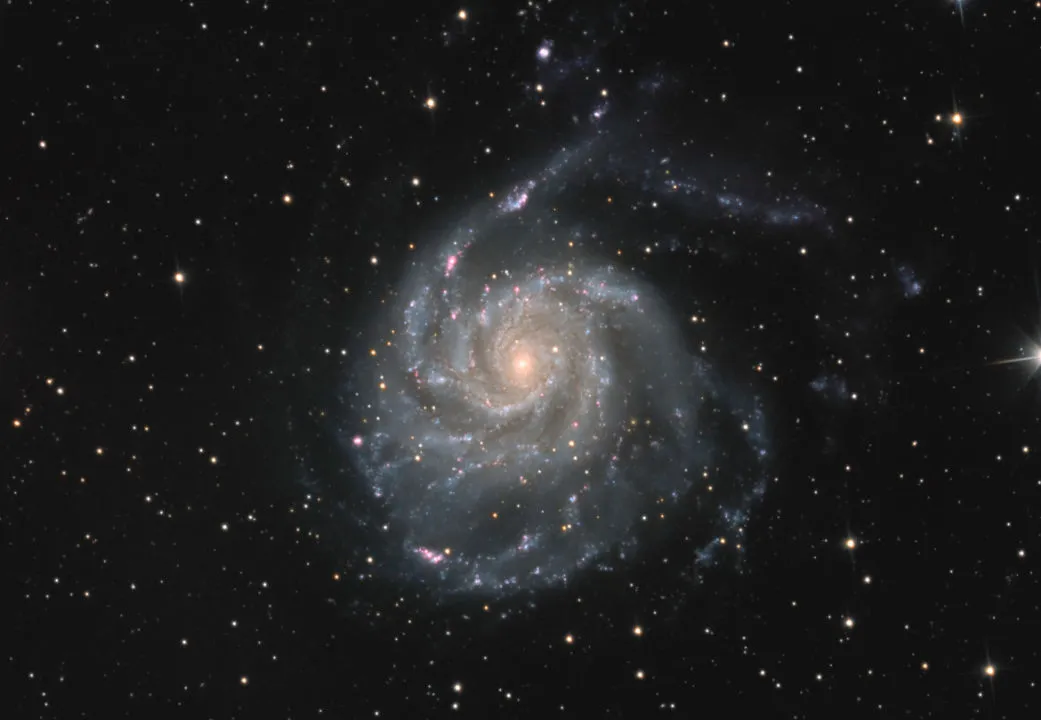
We start with M101, a mag. +7.9 face-on spiral galaxy also known as the Pinwheel Galaxy. It’s easy to find, marking the northeast point of an equilateral triangle with Mizar (Zeta (ζ) Ursae Majoris) and Alkaid (Eta (η) Ursae Majoris).
M101 appears large, 20 x 15 arcminutes through a 150mm scope, which gives it a low surface brightness, but it remains relatively easy to see. A small scope shows a mottled object with uneven brightness, definitely oval with a small, central nucleus. Larger instruments give more definition to the spiral arms, revealing distinct star knots.
M51
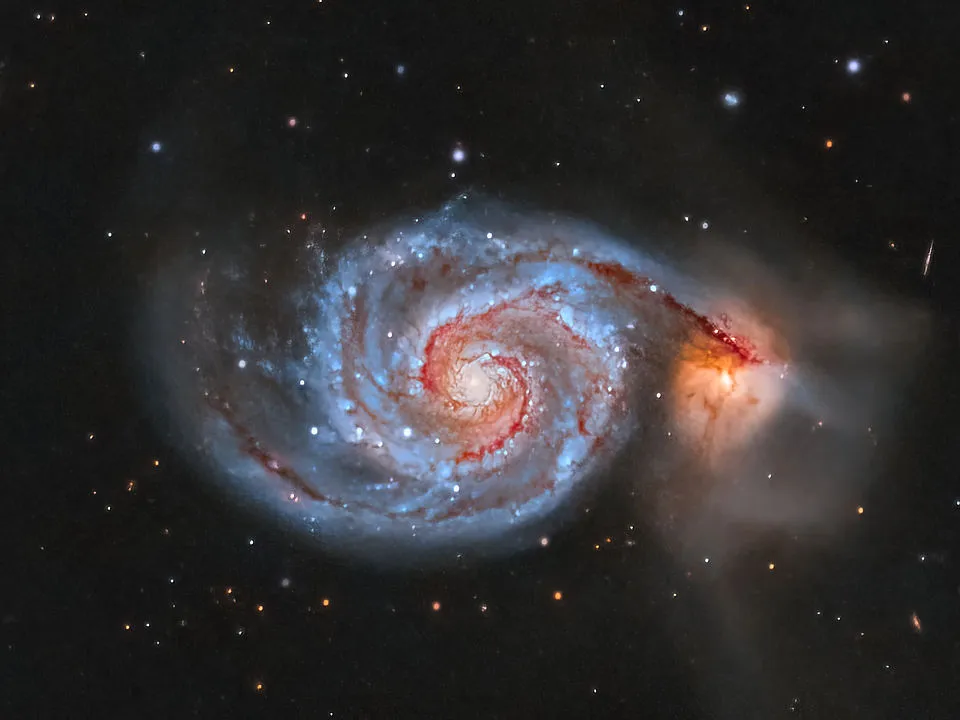
M51, the Whirlpool Galaxy, is a mag. +8.4 spiral galaxy which, like M101, is presented face-on to us. However, M51 is smaller than M101 at 11 x 7 arcminutes and this gives it higher surface brightness. It lies within Canes Venatici, 3.6° southwest of Alkaid. Locate it by imagining it as the southwest point of an isosceles triangle with Alkaid and mag. +4.7 24 Canum Venaticorum.
Smaller instruments show a mottled halo surrounding a brighter core. The galaxy has an interacting companion of apparently similar surface brightness but smaller: mag. +9.6, 5 x 4 arcminute NGC 5195.
A 250mm or larger scope shows the tightly wound spiral arms of M51 well.
M106
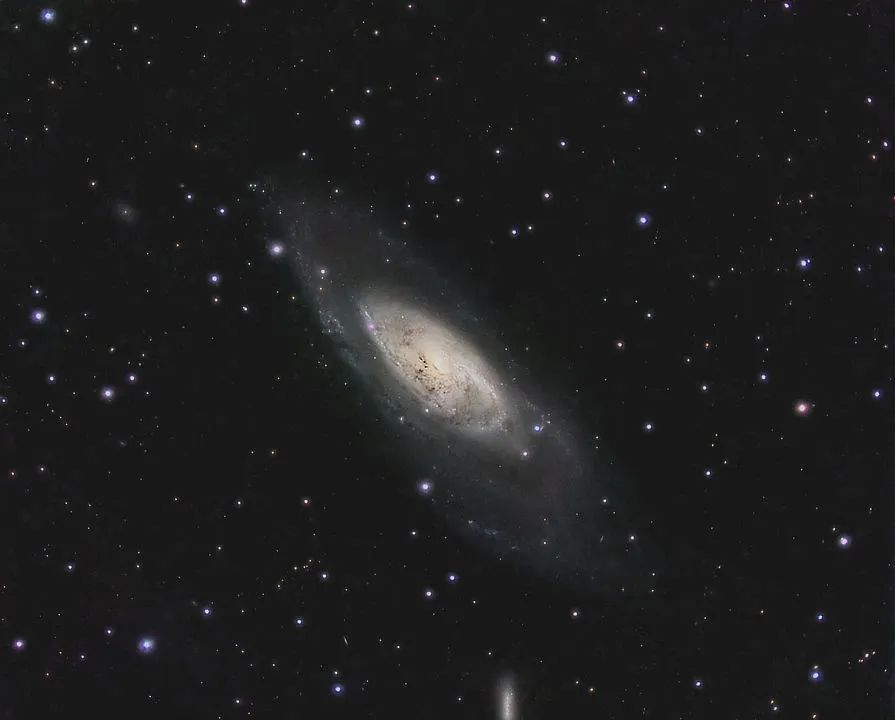
Next is galaxy M106, 12° west of M51 and roughly mid-way between Phecda (Gamma (γ) Ursae Majoris) and Chara (Beta (β) Canum Venaticorum). It’s a bright and large spiral galaxy, shining at mag. +8.4 with an apparent size of 19 x 8 arcminutes. Like M51, M106 lies in Canes Venatici. A 150mm scope shows it well, a mottled, granular object with a bright core region surrounding a bright nucleus.
Larger instruments help pick out the tight spiral arms within the core. They appear somewhat lop-sided, the arm to the northeast appearing brighter. The smaller galaxy, NGC 4248, is located 13 arcminutes to the northwest. Although listed as mag. +12.6, with an apparent size of 3 x 1.2 arcminutes, its surface brightness isn’t dissimilar to that of M106.
M109
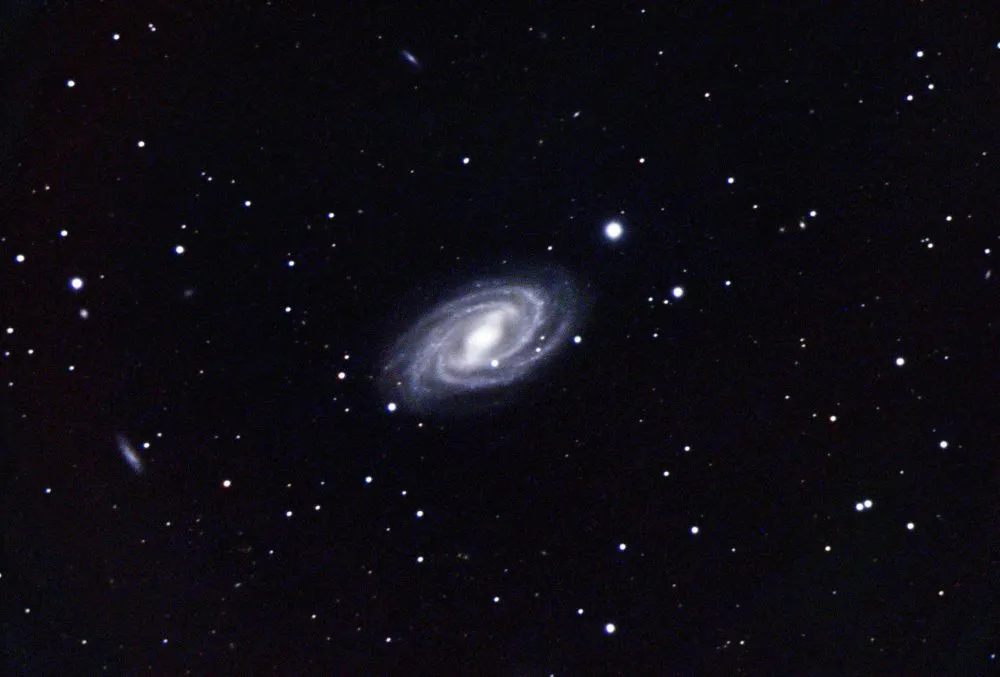
M109 returns us to Ursa Major. This mag. +9.8 barred spiral is really easy to locate. Simply extend the line from Merak (Beta (β) Ursae Majoris) through Phecda, extending it for 39 arcminutes; using a low-power eyepiece, Phecda and M109 will probably appear in the same field of view.
With a total apparent size of 7.6 x 4.9 arcminutes, M109’s surface brightness can be a struggle for smaller scopes which show it as a hazy patch. Its halo appears indistinct and faint, the core small but nicely concentrated. The galaxy’s central bar and tightly wound arms can be seen with larger instruments with powers of around 150–250x revealing the best views.
M97
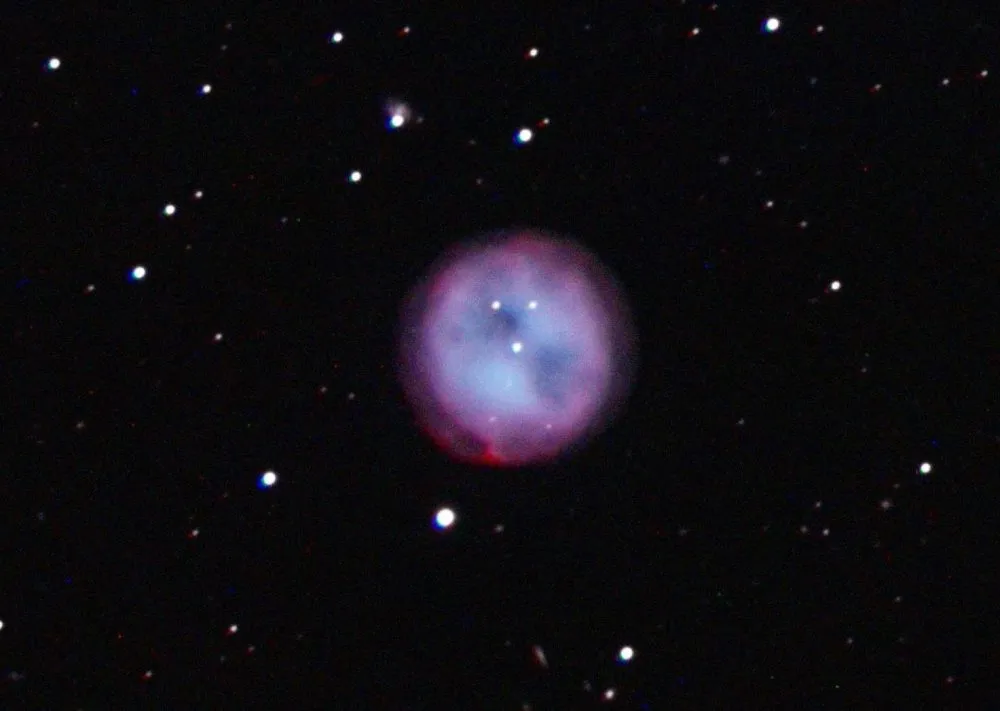
M97, the Owl Nebula, is a planetary nebula with a reputation for being one of the harder objects in the Messier catalogue to see, mainly because of its low surface brightness. It’s listed at mag. +9.9 and has apparent dimensions of 3.4 x 3.3 arcminutes. Find it by heading one-quarter the distance from Merak towards Phercad, looking 0.8° south-southwest (perpendicular to the Merak–Phercad line) of this point.
A 150mm scope shows a featureless circular glow. A 250mm instrument and averted vision may show two darker patches within the glow. A 300mm scope shows the 50-arcsecond patches better, but they are still far from easy. They have been likened to two eyes looking back at you, hence its informal name, the Owl Nebula.
M108
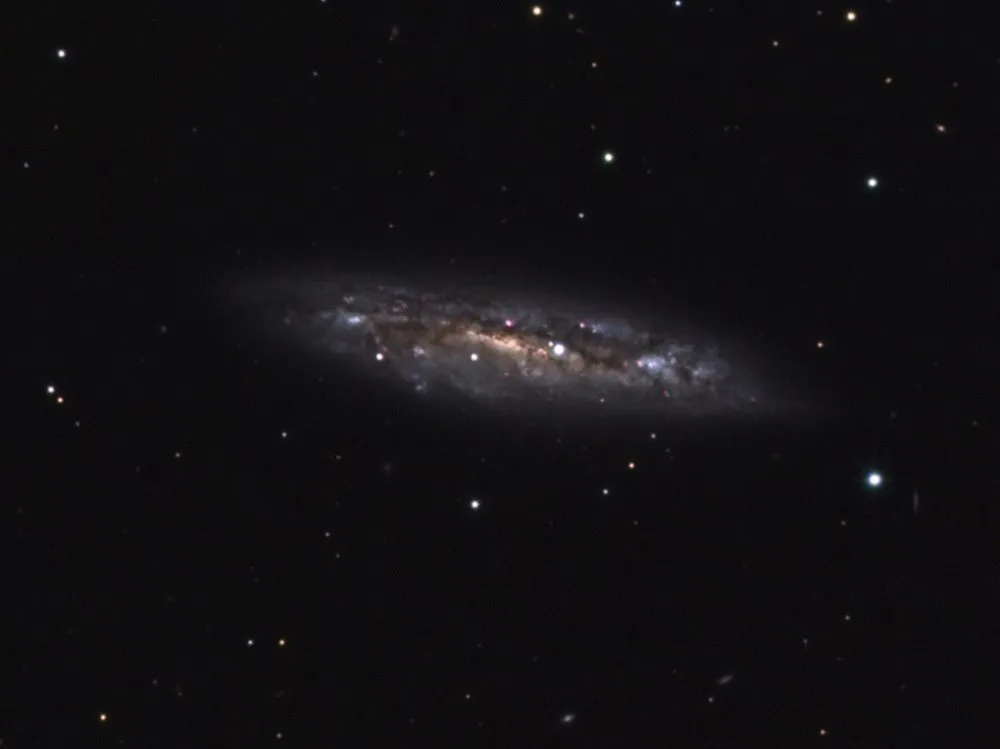
You may have passed over our final target, the edge-on spiral galaxy M108, on your way to M97. To locate mag. +10.0 M108, head 1.5° from Merak along the Merak–Phecda line, then 0.3° south-southwest (perpendicular to the line). This can be a tricky object in small instruments, a 150mm scope revealing an elongated glow of 8 x 1.5 arcminutes.
At 100x power it shows a clumpy, broken appearance, but seems to lack a core. Larger apertures brighten the galaxy, but fail to reveal anything more than the elongated, unevenly-lit halo hinted at by a smaller scope.
NGC 3631

While M108 is highly inclined to our line of sight, our next stop-off, the spiral galaxy NGC 3631, is virtually face-on. It’s located 2° southeast of M97 – extending the line from M108 through M97 for 2.6x takes you straight to it – and listed at mag. +10.1. However, its face-on nature means its surface brightness is quite low, making it a difficult target for smaller apertures.
A 250mm scope shows it as a circular glow approximately 2 arcminutes across. A small, bright central core can be seen, roughly one-quarter this size. A 300mm instrument virtually doubles its size and reveals its distinct star-like nucleus. NGC 3631 is located 33.7 million lightyears from Earth.
NGC 3738

Our next target is fairly dim too. NGC 3738 is a mag. +12.0 dwarf galaxy visible as a 1.5 x 1.0-arcminute glowing patch through a 250mm scope. It’s located close to the base of the Saucepan’s pan. Imagine a position roughly two-thirds the way from Merak towards mag. +2.4 Phecda (Gamma (γ) Ursae Majoris). Here you’ll find a mag. +5.6 star. NGC 3738 is 0.3° south of this star.
Despite its largely unstructured nature compared to say, a spiral galaxy, NGC 3738 does appear to have a decent surface brightness and shows a distinctly elongated core. Estimated to be around 10,000 lightyears across or roughly one-tenth the size of the Milky Way, NGC 3738 is around 12 million lightyears away.
NGC 3729
Our penultimate target is an object that is interacting with our final entry below, NGC 3718. Both galaxies are estimated to be around 150,000 lightyears apart and nearly 48 million lightyears away. As you’d expect from this, NGC 3729 and NGC 3718 appear fairly close to one another in the sky, separated by around 12 arcminutes. NGC 3729 is a barred spiral galaxy discovered by William Herschel in 1798.
A 250mm scope shows a brighter core region, a 300mm instrument revealing elongations that bleed into the surrounding outer halo glow. An 11th-magnitude foreground star can be seen a little under 1 arcminute from NGC 3729’s centre.
NGC 3718

As mentioned, NGC 3718 forms an interacting pair with NGC 3729, 12 arcminutes to its north-northeast. On paper, NGC 3718 is the brighter of the two, with an integrated magnitude of +10.7 versus mag. +11.4 NGC 3729. However, the larger total size of NGC 3718 at 8.7 x 4.5 arcminutes reduces its surface brightness significantly compared to the more compact 3.1 x 2.1-arcminute form of NGC 3729.
A 250mm scope reveals very little about the object other than a uniform glow, with not much more from a 300mm instrument. NGC 3718 is also catalogued as Arp 214 in the Arp catalogue of peculiar galaxies.
Did you spot all 10 deep-sky targets in the Plough / Big Dipper? Let us know by emailing contactus@skyatnightmagazine.com.
This guide originally appeared in the May 2023 and March 2025 issues of BBC Sky at Night Magazine.
